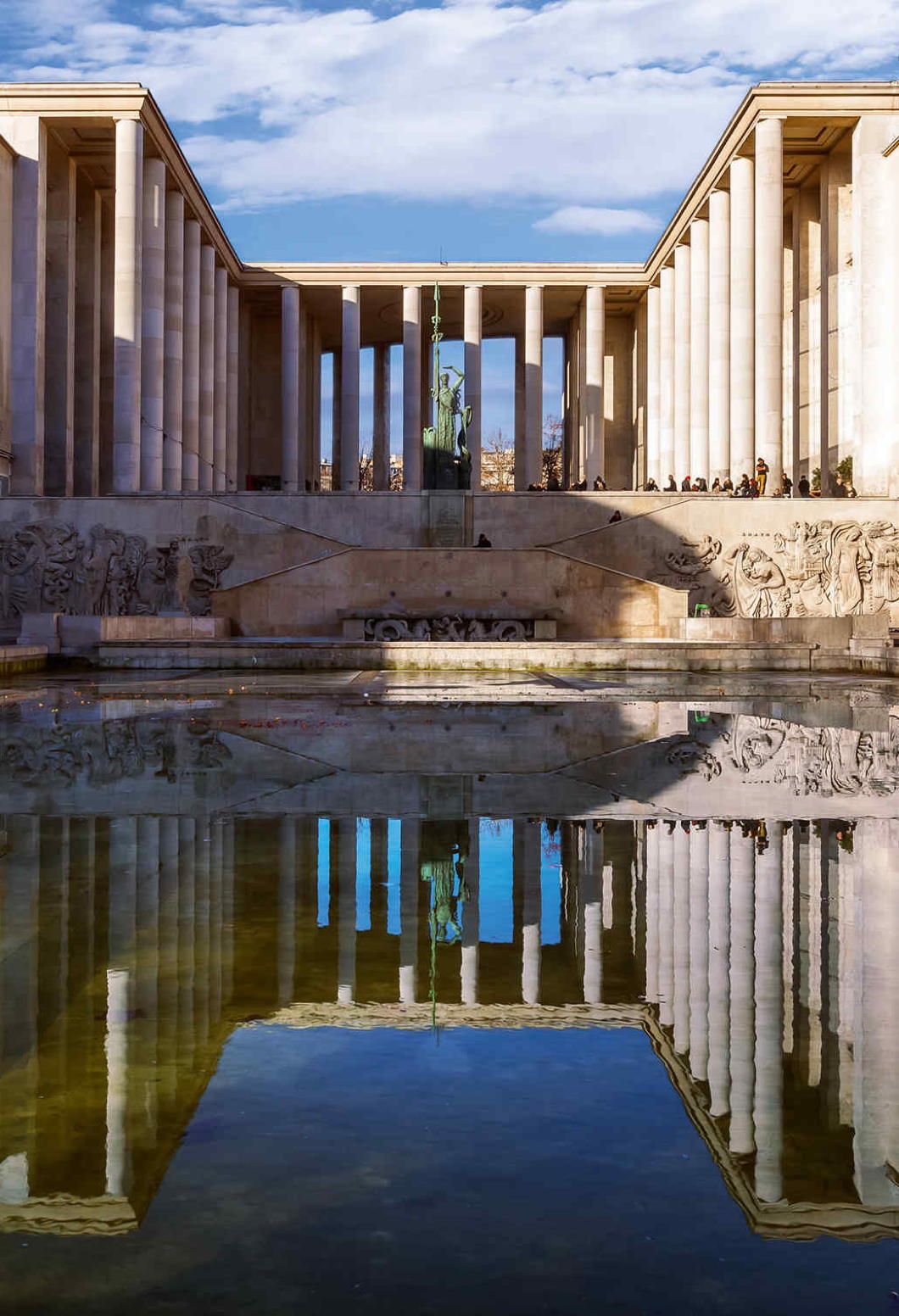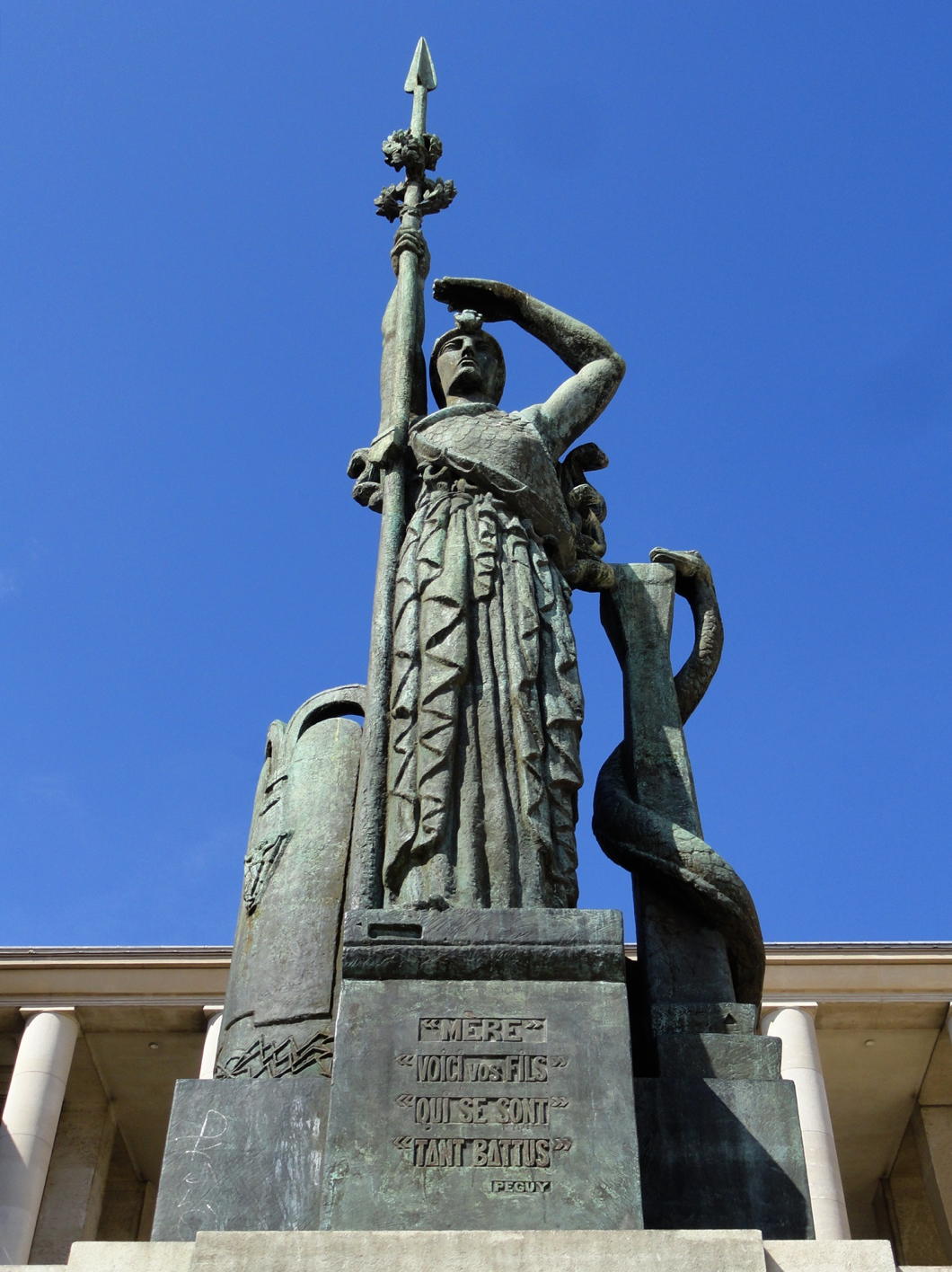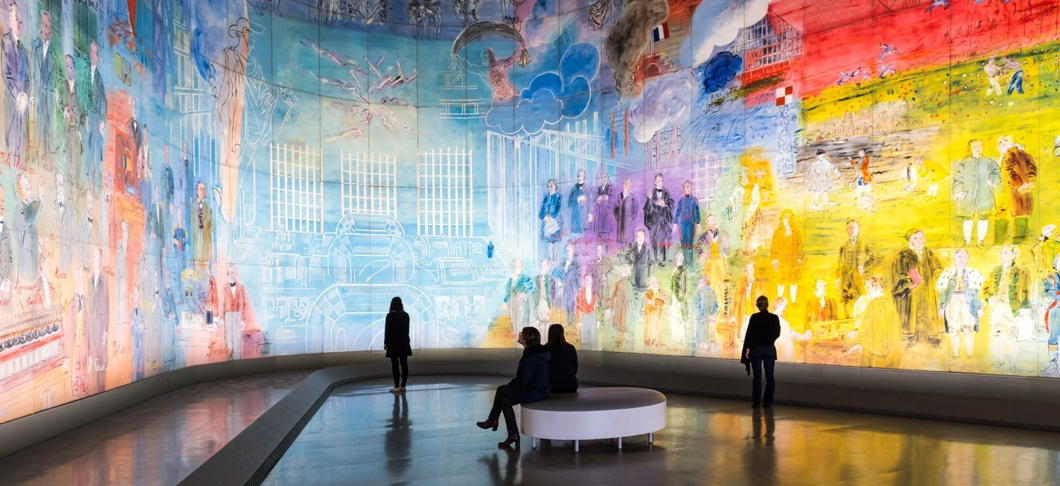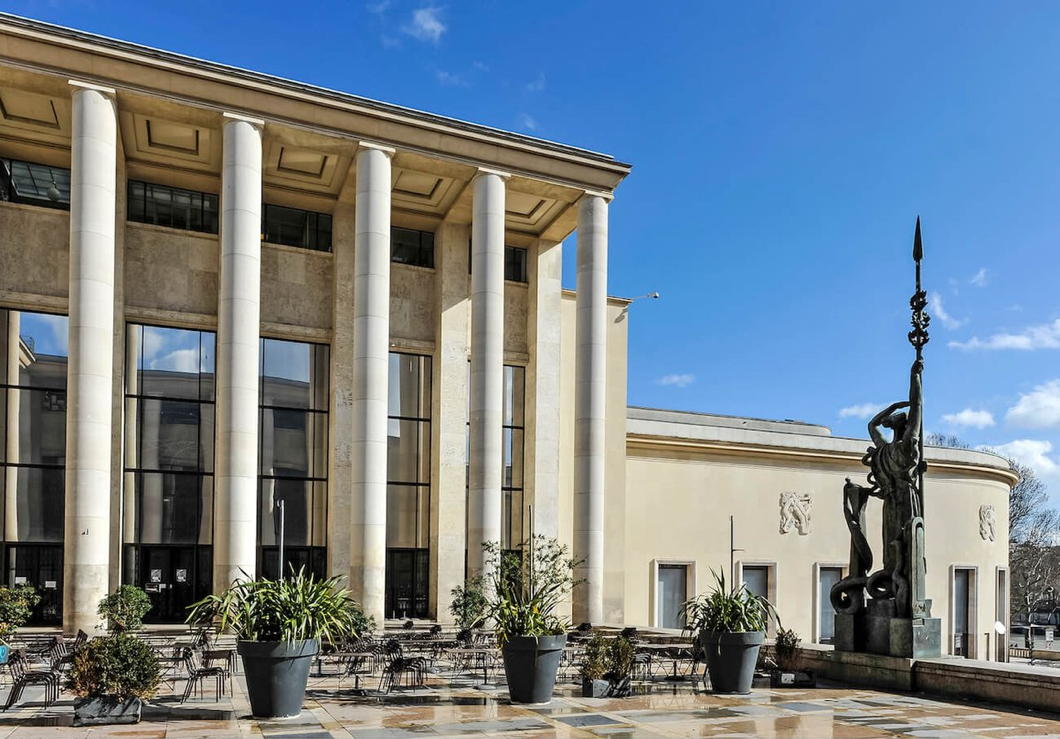
About Andrew Cusack
 Writer, web designer, etc.; born in New York; educated in Argentina, Scotland, and South Africa; now based in London.
Writer, web designer, etc.; born in New York; educated in Argentina, Scotland, and South Africa; now based in London. read more
News
Blogs
Reviews & Periodicals
Arts & Design
World
France
Mitteleuropa
Knickerbockers
Argentina
The Levant
Africa
Cape of Good Hope
Netherlands
Scandinavia
Québec
India
Muscovy
Germany
Academica

The Palais de Tokyo
In the early 1930s the City of Paris decided the Musée de Luxembourg had become too small to continue as the city’s gallery of contemporary art. At the same time, the French Republic was beginning to think it needed a proper museum of modern art to display its own collections as well. The City and the Republic joined forces to build a new palace of art in time for the 1937 International Exposition.
While the City and the Republic would house their collections at a single site the museums were to remain separate, so in May 1937 the Palace of the Museums (plural) of Modern Art was inaugurated by President Lebrun.
Because of its riparian location on the Avenue de Tokio (renamed to Avenue de New-York in 1945) the building quickly became known as the Palais de Tokyo.

Antoine Bourdelle’s 1922 sculpture ‘La France’ was rededicated here in 1948 as a monument “to the volunteers of the Free French Forces who died for the honour and freedom of France”. At the base of Bourdelle’s statue are the words of Charles Peguy: “Mother, here are your sons who fought so hard.”

Bourdelle’s statue works in context but, I have to admit, is not particularly to my taste. I much prefer Dufy’s La Fée Electricité which the MAM houses in a large, encompassing space. The giant fresco was, like the building that now houses it, commissioned for the 1937 exposition where it featured in the Pavilion of Light and Electricity and displays a variety of scientists and inventors who contributed to Man’s harnessing of the power of electricity.
I love Dufy’s lofty illustrativeness. The colour scheme is varied but not bold. He is unfussy and unpretentious and when he cobbles things together it somehow seems natural. Also, the art restorer Valentine Walsh used to have a delightful dog she named Dufy, which naturally inclines me towards a sympathy for the artist. It sounds reductive and pejorative but I’ve always thought Dufy would have been an excellent designer of banknotes.

In 1977 the Musée National d’Art Moderne moved out to the Centre Pompidou, though rather arbitrarily it left behind the works of post-impressionist artists born before 1870. These eventually left for the Musée d’Orsay when it opened in the former railway station in 1986.
The ‘national’ half of the Palais de Tokyo then housed a transitory array of institutions or collections, including the reserves of the Fonds national d’art contemporain (now part of CNAP at La Defense), the original Institut des hautes études en arts plastiques (IHEAP), the National Photography Centre (since merged into the Jeu de Paume), and the film school La Fémis.
Since 2002, this half has housed the ‘Palais de Tokyo / Site de création contemporaine’ — the largest space in France dedicated to creations of the contemporary arts, be it painting, sculpture, design, dance, literature, or cinema.
The ‘city’ half of the Palais continues to house the Museum of Modern Art of the City of Paris, recently re-opened after an extensive renovation.
Search
Instagram: @andcusack
Click here for my Instagram photos.Most Recent Posts
- Bicycle Rack April 29, 2024
- Burns Tower April 19, 2024
- Patrick in Parliament March 18, 2024
- Articles of Note: 13 March 2024 March 13, 2024
- Cambridge March 9, 2024
Most Recent Comments
Book Wishlist
Monthly Archives
Categories


